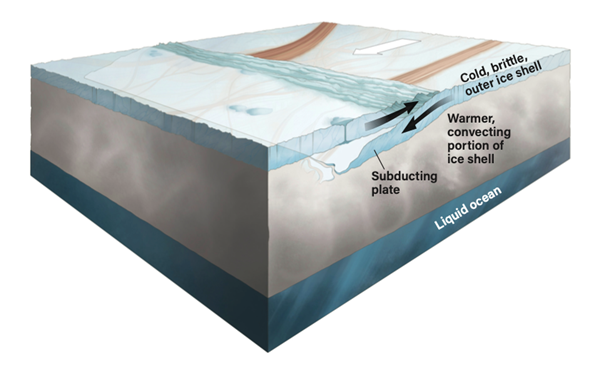Earth is special in that it has two things that other terrestrial planets don’t: an abundance of internal heat, from when our planet was molten rock, and liquid water. To understand why our planet is unique in this regard, let’s first look at Earth versus Mars.
Earth is relatively large for a rocky planet. Its sheer amount of mass has allowed it to hold onto its internal heat over billions of years. The heat causes Earth’s surface to deform and plays a key role in ensuring that Earth’s outer surface layer, called the lithosphere, doesn’t become too cold and thus too rigid to move. But Mars is smaller than our planet. Because of this, the Red Planet has cooled at a much faster rate. Mars’ lithosphere has become very rigid — too rigid to be broken into plates.
Heating isn’t the only thing at play when it comes to plate tectonics. Venus is about the same size as Earth, so theoretically, one might think it’s also likely to have moving plates. But it doesn’t. While heating is enough to stave off a rigid lithosphere, it isn’t enough to move Earth’s plates. That’s where liquid water comes into the equation. On Earth, interior water lubricates the tectonic plates, allowing them to flow and slide past one another, but there is no water in Venus’ interior.
To be clear, tectonic deformation is currently occurring in the outer layers of Venus and Mars, and once took place on Mercury. However, because the outer layers of these planets are not broken up into plates, we consider these planets to be one-plate planets. So, Venus and Mars still experience tectonics, just not plate tectonics.
Earth may not be the only body in the solar system to experience plate tectonics, however. Jupiter’s icy moon Europa is covered in a shell of cold, brittle ice that is believed to float atop a warmer, fluid ice layer. Like Earth’s plates, when two plates of this cold ice hit each other, one of these plates is able to slide beneath the other into Europa’s interior. Scientists have also observed evidence of water upwelling to the surface of this moon, much like magma wells up from vents on Earth.










